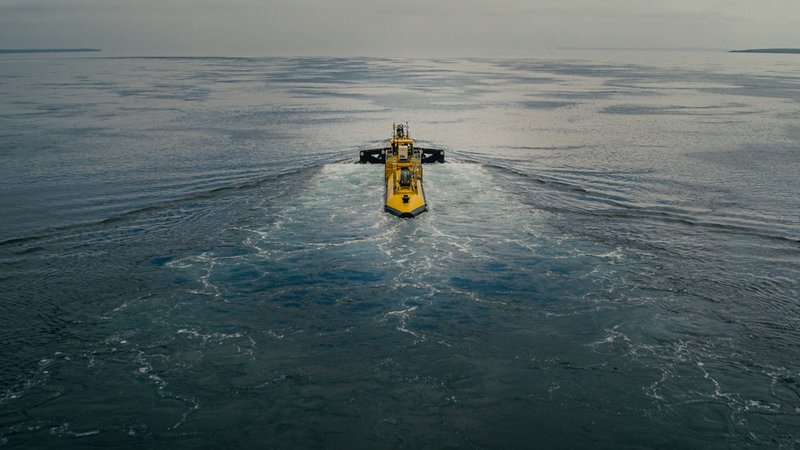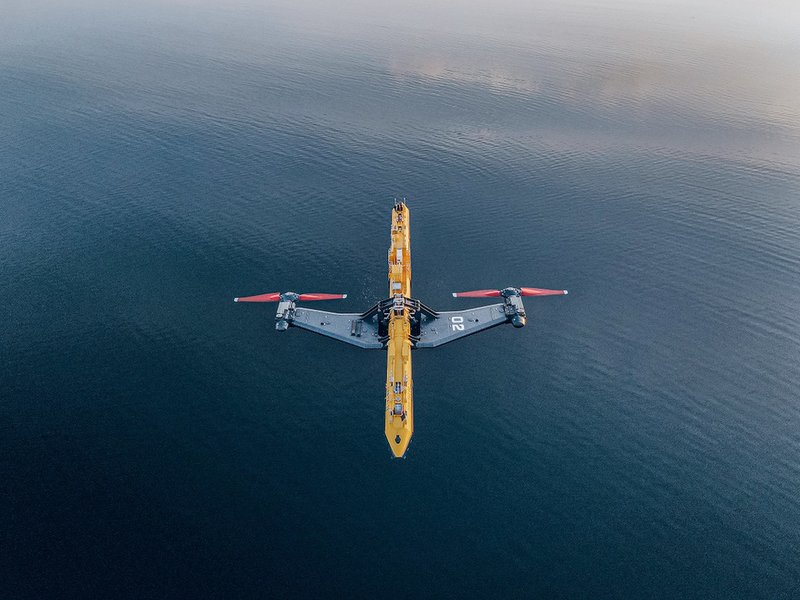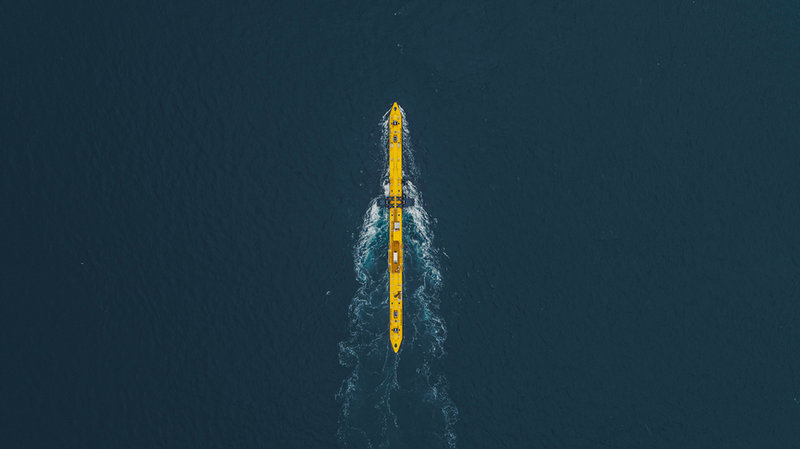Q&A
Turning the tide: Orbital Marine on the time for tidal power
The O2 tidal turbine can produce 2MW of power making it the most powerful in the world, according to its creators, Orbital Marine. The firm hopes to commercialise the technology with help from a new €26.7m EU Horizon 2020 project and Orbital programme manager, James Murray, tells Heidi Vella why now is the time for tidal energy.
O
ften it seems tidal stream power is the technology the clean energy revolution forgot. Despite decades of development, there is only 60MW of wave and tidal energy installations across the world, according to Ocean Energy Europe, and much of the optimism associated with tidal power comes with the caveat of the energy source’s high prices.
For instance, a recent report notes that tidal power could one day provide the UK with 34TWh a year, the equivalent to 11% of current annual electricity demand, but only if technology costs come down first. The current price of tidal power would need to fall from its current level of around £240 per MWh to below £150 per MWh.
The report suggests that the installation of 124MW pilot projects for learning purposes could help deliver this change, and this is not the only new project in the UK tidal industry.
Orbital Marine, with its 72-meter submarine-esqe O2 tidal turbine, which is designed to minimise costs on all fronts, hopes to accelerate change in the sector under the EU funded FORWARD-2030 project. The initiative is aimed at furthering marine power technology, including for future hydrogen production.
Heidi Vella: Orbital Marine’s O2 tidal turbine, which is currently deployed at the Orkney UK testing facility, is designed differently from other turbines. How is it different?
James Murray: Our focus has always been on developing technology with low capital, installation, and maintenance costs. Our platform can be installed on site without needing heavy lifting or construction vessels but using only locally based, low-cost vessels.
Furthermore, because the O2 is a floating towable platform, it's highly accessible for maintenance, with all the generating components located on the surface for ease of access.
It also has retractable legs to bring the sails and the pitching hubs above the waterline for onsite manned access. In addition, it’s large-scale – we have the largest rotor diameters associated with a tidal turbine – and because it’s a floating platform, the rotors are mounted close to the surface where the tidal currents are.
The MP for Orkney recently asked the prime minister for tidal power to be included in a ring-fenced pot at the next Contract for Difference (CfD) auction. Is your technology ready for that?
Our technology is ready and there are several other projects around the UK that could also bid for CfD. We do need an appropriate level of ring-fenced revenue support under the scheme to recognise that tidal stream energy is at an earlier stage of development, however. That will allow us to bring those first commercial arrays forward and to reduce our costs. This is something other sectors, such as wind and solar, have previously received.
We're asking for 100MW, which is a very modest amount of capacity, especially compared to the levels of support provided to other renewable technologies in the past. But it will make a huge difference for the next steps of industry development and commercialisation.
How will this help you reduce costs?
We can reduce costs by continuing innovation and by working with our supply chain. But underpinning that is the need for this revenue support framework, which gives investors’ confidence to continue to invest, as well as giving the supply chain enough certainty to look at ways it can work with ourselves and others to reduce costs through various efficiencies.
Through building more machines, working closely with our supply chain, and more investments in cost reduction programmes, we can reduce the cost of the technology. We need to move from one-offs to production at scale.

Orbital Marine Power is leading a consortium – FORWARD 2030 – focused on the commercialisation of floating tidal energy. What are your aims for the project?
We've identified several innovations that we want to bring forward for future models of the O2 to reduce the generation cost by a further 25%. But we will also consider how tidal energy has the advantage of being a highly predictable source of renewable electricity and so can support hydrogen production and energy storage.
So we will consider how to design plants to support decarbonisation objectives, not just in electricity, but across transport and heat. We’ll also consider grid network requirements, and how energy systems will look in the future if the vast majority of our electricity comes from renewables.
Is tidal power potentially more suited to hydrogen production than offshore wind?
Tidal energy is inherently predictable; at any given site we can know almost years in advance how much energy we can produce on any given day. It has that advantage over any other form of renewable energy which provides unique opportunities to optimise systems. The predictability can translate into more optimal cost reduction systems for hydrogen production.
It's a different optimisation challenge in terms of sizing electrolysers, and everything else, but there are opportunities for increased optimisations and lower costs with a system supplied with low-cost tidal stream energy.

With wind, tidal power and hydrogen production all possibly being offshore, is there a risk of the seas becoming congested, creating negative environmental impacts?
Another aspect that the FORWARD 2030 project is creating is a sophisticated environmental monitoring programme associated with the turbine we're delivering in that project [the next iteration of the O2]. As projects are deployed, we need to collect environmental data to understand and quantify any potential environmental impacts. At the moment, there's a limited number of strategic deployments so we have limited information.
We will also consider marine spatial planning with the University College Cork, which has experts in that field. It’s about recognising that there will be more activity offshore and marine spatial planning can ensure deployment happens in an efficient way, while acknowledging concerns or other sea users. We'll be looking to develop a report for policymakers to inform marine spatial planning.
The Forward 2030 project is funded under EU Horizon 2020; are you concerned that the UK’s separation from the EU could impact development of the sector?
It's important that we continue to work with our research partners. There are mutual interests between the UK and Europe in regard to developing tidal stream energy. It’s a fantastic resource in the UK and on the continent, particularly in France, so there's a lot of mutual interest in commercialising the sector. We would hope the UK and Europe continue to work closely in aligning innovation programmes such as Horizon 2020 to help continue to commercialise the sector.

Finally, are you optimistic that the UK tidal stream energy sector will get the government support it is asking for?
We'll have to wait and see. I think we're due an announcement relatively soon. We'll continue to push with our supply chain and with our partners in the sector. We'll continue to demonstrate that the technology is on the cusp of commercialisation.
It has the potential to produce low carbon energy, but also jobs; our O2 tidal turbine was assembled in the UK, it has up to 80% UK supply chain content, which is not something that can be said about many other renewable energy technologies.
The sector has got huge potential to support economic development, particularly in the more peripheral regions where the resource tends to be. Furthermore, the UK is really well positioned to provide fabrication services, ongoing installation and maintenance services for tidal stream projects around the globe, as the industry develops. There’s a fantastic story there, for both low-carbon generation, but also economic development, and job creation.